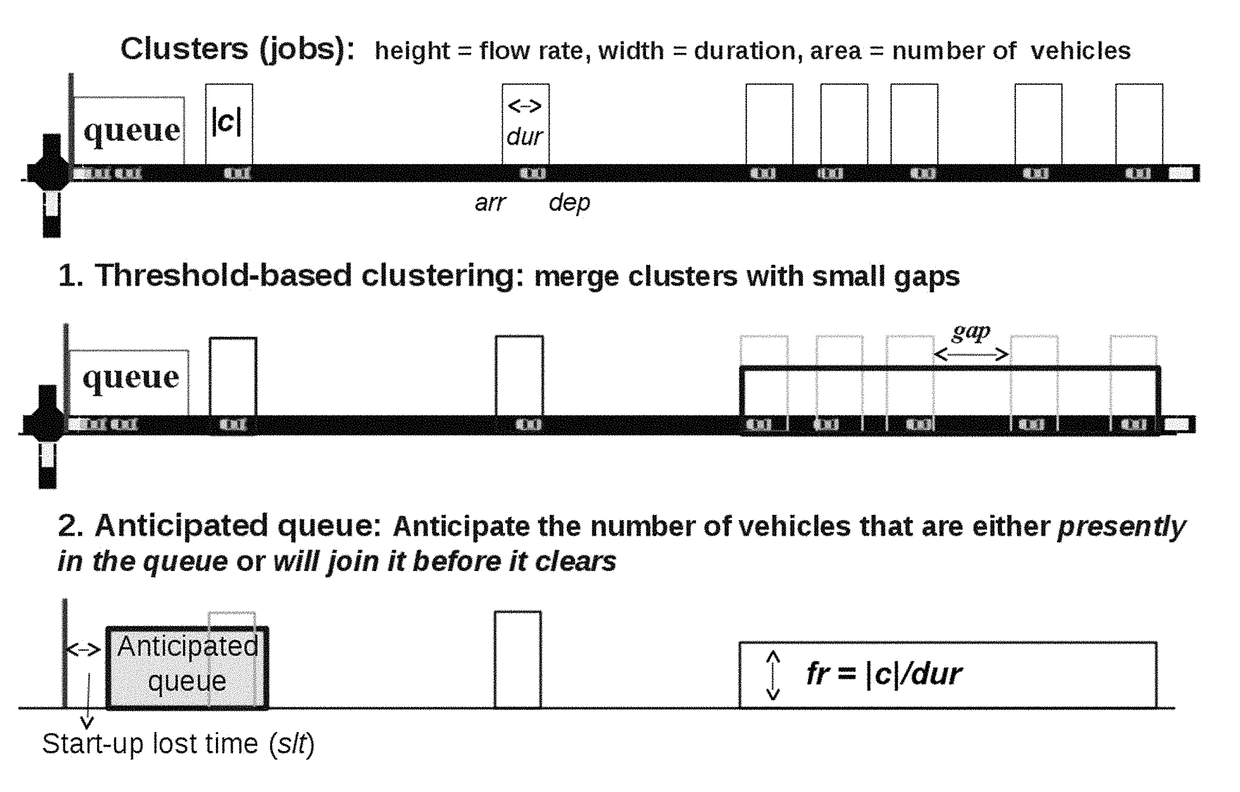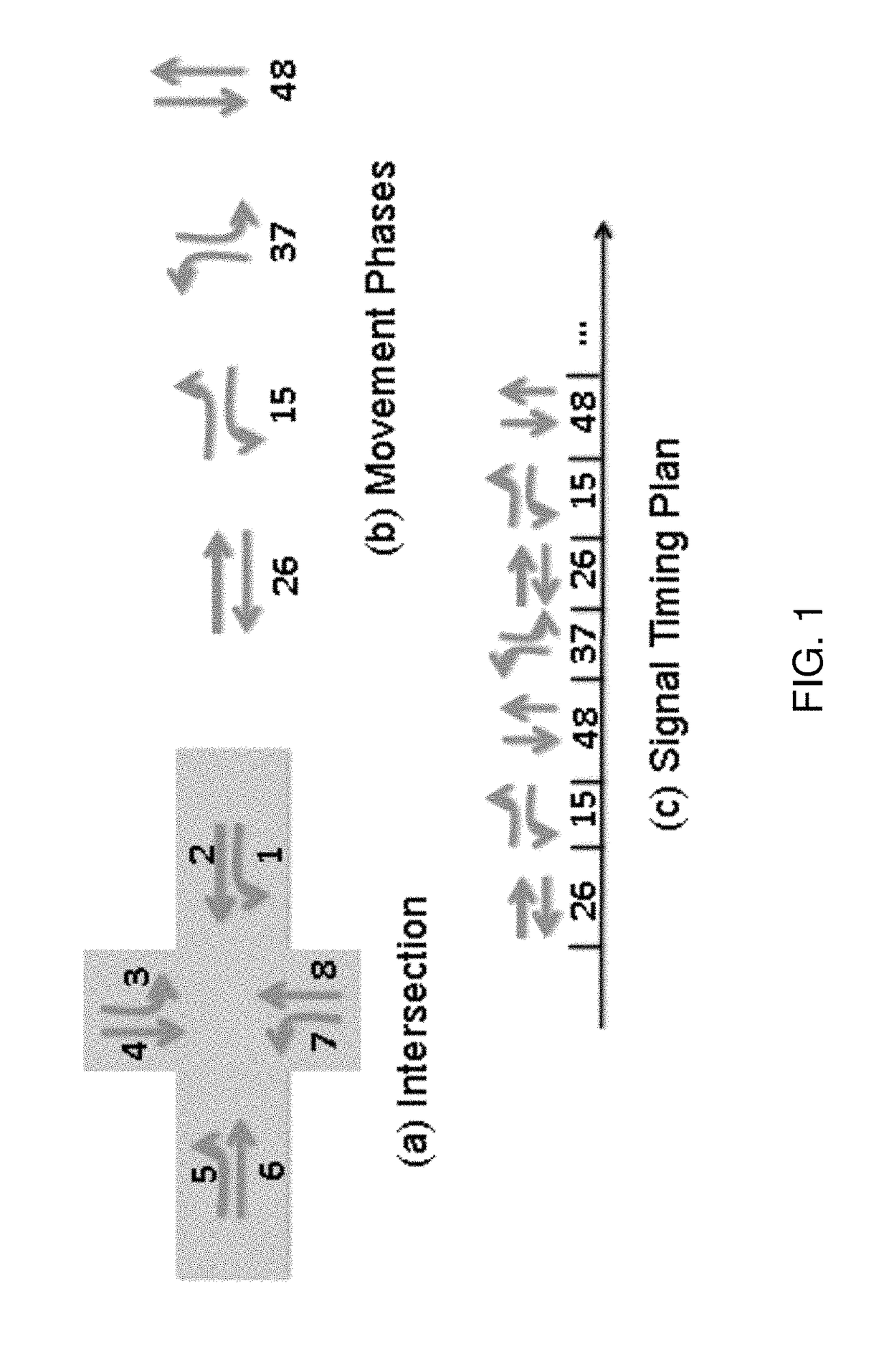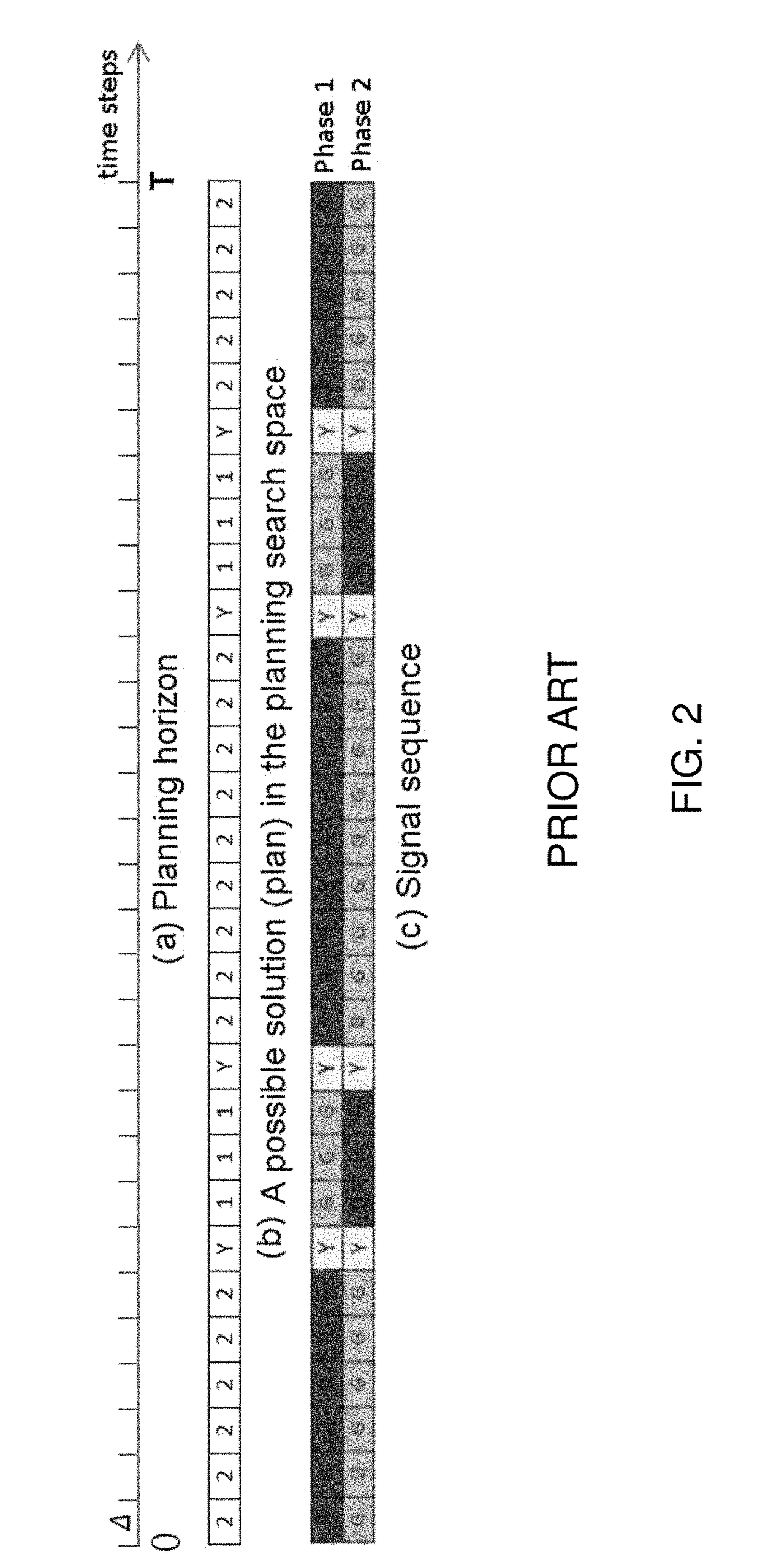Smart and scalable urban signal networks: methods and systems for adaptive traffic signal control
a technology of urban signal network and adaptive traffic signal, applied in the direction of road vehicle traffic control, traffic signal control, controlling traffic signals, etc., to achieve the effect of increasing the visibility of future incoming traffi
- Summary
- Abstract
- Description
- Claims
- Application Information
AI Technical Summary
Benefits of technology
Problems solved by technology
Method used
Image
Examples
Embodiment Construction
[0023]The traffic signal control problem in the present invention is formulated as a conventional schedule-driven process. To define the problem, a road network with a traffic light at each intersection is the focus. Now turning to FIG. 3 illustrating the core intersection control optimization algorithm (b) of the present invention, which uses the current inputs (a) to compute a new sequence SSext to extend the existing signal sequence for the traffic controller, based on a rolling horizon scheme (c). There are two real-time inputs I1 and I2, and two real-time outputs O1 and O2. As shown in FIG. 3 block (a), the internal inputs of an intersection including static (or slowly changing) settings including local geometrics, timing constraints, and model parameters, as real-time observation including traffic flow prediction (I1) and traffic signal status (I2) at each decision time.
[0024]For each intersection, the local geometrics include a set of entry and exit roads, in which each has f...
PUM
 Login to View More
Login to View More Abstract
Description
Claims
Application Information
 Login to View More
Login to View More - R&D
- Intellectual Property
- Life Sciences
- Materials
- Tech Scout
- Unparalleled Data Quality
- Higher Quality Content
- 60% Fewer Hallucinations
Browse by: Latest US Patents, China's latest patents, Technical Efficacy Thesaurus, Application Domain, Technology Topic, Popular Technical Reports.
© 2025 PatSnap. All rights reserved.Legal|Privacy policy|Modern Slavery Act Transparency Statement|Sitemap|About US| Contact US: help@patsnap.com



